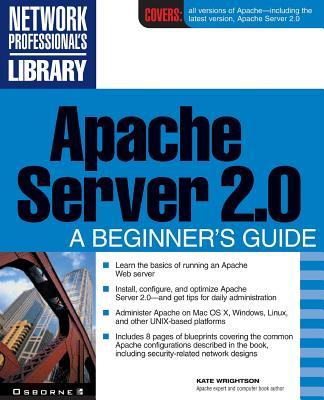
Zustellung: Di, 29.07. - Sa, 02.08.
Versand in 2 Wochen
VersandkostenfreiBestellen & in Filiale abholen:
This work offers clear and straightforward instructions for tasks ranging from basic to technical, as well as the background information required for an administrator to understand the history of the server and how best to run it in today's Web environment. It contains information on running Apache with different platforms, including UNIX-based systems like Linux, FreeBSD, and Solaris; Windows products, including NT and Windows 2000; and Mac OS X. There are eight pages of blueprints which demonstrate the differences between Apache Server and IIS 5 and diagrams showing Apache running on different operating systems.
Inhaltsverzeichnis
Part I - Introducing Apache; Ch. 1: History and Background of Apache; Ch. 2: Preparing for Apache; Part II - Installing Apache; Ch. 3: Installing Apache from Binaries; Ch. 4: Installing Apache from Source Code; Ch. 5: Upgrading from Earlier Versions of Apache; Ch. 6: Running a Heterogeneous Network; Ch. 7: Apache Modules; Part III - Configuring Apache; Ch. 8: Configuration Files; Ch. 9: Testing Apache Configuration; Ch. 10: Booting the Server; Ch. 11: Configuring the Site; Ch. 12. Dealing with Innovation (mod_perl: A Case Study); Part IV - Apache Administration; Ch. 13: Logs; Ch. 14: Disk Management; Ch. 15: Performance Tuning; Ch. 16: Dealing with Users; Ch. 17: Serving Compliant HTML; Part V - Beyond the Basics: Advanced Apache Topics; Ch. 18: MIME and Other Encoding; Ch. 19: CGI - The Common Gateway Interface; Ch. 20: SSI - Server Side Includes; Ch. 21: Image Maps; Ch. 22: CSS - Cascading Style Sheets; Ch. 23: Virtual Domain Hosting; Ch. 24: E-Commerce; Part VI - Security and Apache; Ch. 25: Basic Security Concerns; Ch. 26: What to Do If You Get Cracked; Ch. 27: SSL - Secure Socket Layer; Ch. 28: Firewalls; Ch. 29: Proxies; Part VIII - Appendices; Appendix A: Internet Resources; Appendix B: Using a Unix Text Editor; Appendix C: Glossary; Appendix D: Common Unix Commands; Appendix E: Apache Configuration Files
Produktdetails
Erscheinungsdatum
05. September 2001
Sprache
englisch
Seitenanzahl
560
Dirigiert von
Kate Wrightson
Verlag/Hersteller
Produktart
kartoniert
Gewicht
997 g
Größe (L/B/H)
231/191/35 mm
ISBN
9780072191837
Bewertungen
0 Bewertungen
Es wurden noch keine Bewertungen abgegeben. Schreiben Sie die erste Bewertung zu "Apache Server 2.0" und helfen Sie damit anderen bei der Kaufentscheidung.









